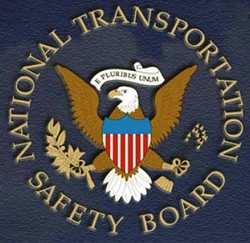Investigation of Deadly 04 September Accident Ongoing
The National Transportation Safety Board and the U.S. Navy will attempt to recover the wreckage of a floatplane that went down off the coast of Whidbey Island in Washington State’s Puget Sound. The investigation of the 04 September accident—which claimed the lives of nine passengers and veteran pilot Jason Winters—is ongoing, as are preparations for the recovery of the lost aircraft, a 1967 de Havilland DHC-3 Otter, registration N725TH.

The recovery effort—which is to commence on 26 September—will see the U.S. Navy endeavor to raise the aircraft from approximately 190-feet of cold, turbid water by means of a crane, a barge, and a work-class Remotely Piloted Vehicle (ROV) appositely christened Deep Drone 8000.
The Navy intends to utilize the crane to hoist the main part of the wreckage onto the barge. Smaller aircraft remnants and debris deemed germane to the NTSB’s investigation are to be gathered from the seafloor by the ROV—a 4,100-pound behemoth designed for U.S. Naval ship and submarine salvage missions to depths of eight-thousand-feet.
The Deep Drone 8000 system comprises the submersible vehicle, an umbilical cable, a motion-compensated handling system, a deck hydraulic power unit, a generator, an operations van, and a maintenance van. The ROV, which is navigated via an acoustic tracking system, is capable of detecting small targets to a distance of two-thousand-feet by dint of its Continuous Tone Frequency Modulation (CTFM) sonar.
Deep Drone uses both electric and hydraulic thrusters for propulsion, and sports a pair of seven-function manipulators adept in the handling of tools, cables, and rigging. To gather the photographic documentation essential to contemporary accident investigation, the is kitted-out with a digital still camera and both black-and-white and color television cameras.
Notwithstanding rampant speculation and widespread, baseless condemnation of an experienced, demonstrably proficient pilot, little is known of the deadly accident. ??According to the NTSB’s preliminary report, N725TH departed Friday Harbor Airport (FHR) on Western Washington’s San Juan Island at approximately 14:50 PDT on the afternoon of Sunday, 04 September 2022. The flight was conducted under Part 135 with a filed destination of Renton Municipal Airport (RNT)—a trip of 70-nautical miles.

Witnesses in the vicinity of the accident site reported seeing the aircraft in straight and level flight before it entered a slight climb, then pitched down in a near-vertical descent. Multiple witnesses described the airplane “spinning,” “rotating” or “spiraling” as it descended. At 15:09 PDT, the aircraft impacted the water and sank. A protracted Coast Guard search turned up no survivors.
In the days following the accident, the NTSB—in cooperation with the Washington State Department of Fish and Wildlife, the National Oceanic and Atmospheric Administration’s (NOAA) Navigation Response Team, and the University of Washington’s Applied Physics Laboratory—located the Turbine Otter’s wreckage using side-scan sonar, multibeam sonar, and various 3D imaging instruments.
The accident’s probable cause will be determined by the NTSB during the agency’s official investigation of the occurrence, and disclosed at the conclusion thereof.
 ANN's Daily Aero-Term (05.07.25): Terminal Radar Service Area
ANN's Daily Aero-Term (05.07.25): Terminal Radar Service Area ANN's Daily Aero-Linx (05.07.25)
ANN's Daily Aero-Linx (05.07.25) Classic Aero-TV: Anousheh Ansari -- The Woman Behind The Prize
Classic Aero-TV: Anousheh Ansari -- The Woman Behind The Prize NTSB Prelim: Bell 206B
NTSB Prelim: Bell 206B Airborne-NextGen 05.06.25: AF Uncrewed Fighters, Drones v Planes, Joby Crew Test
Airborne-NextGen 05.06.25: AF Uncrewed Fighters, Drones v Planes, Joby Crew Test




